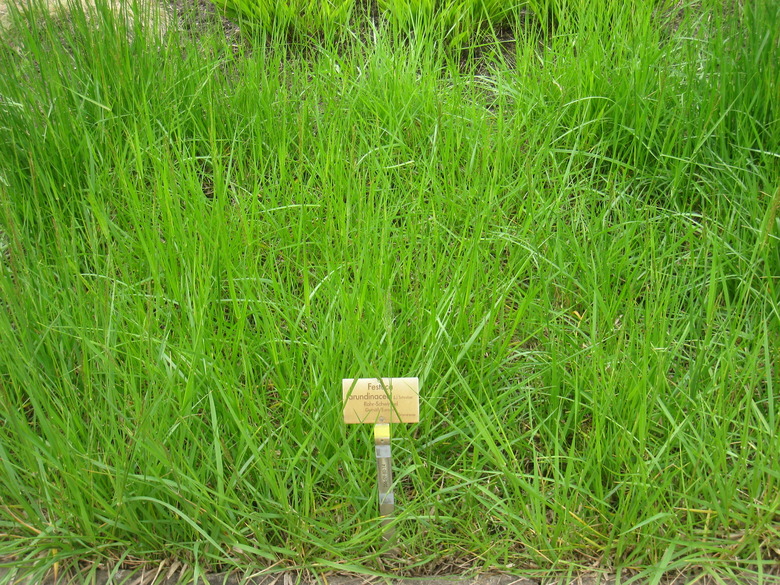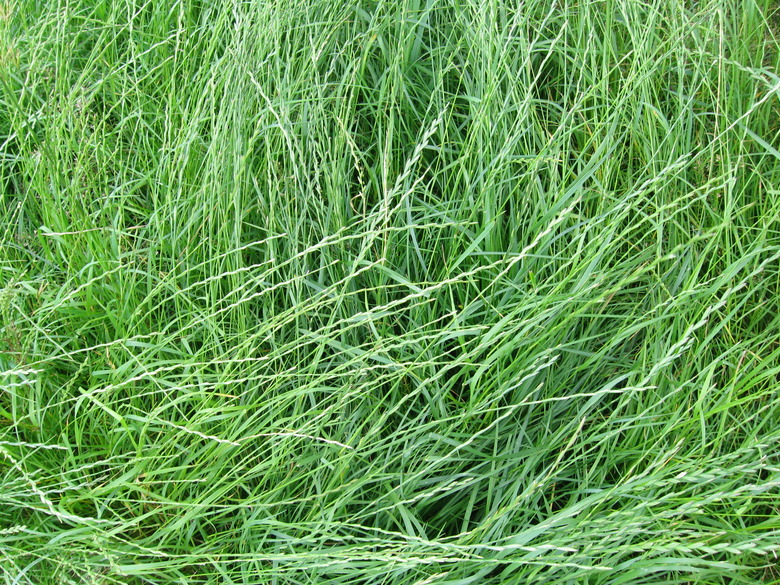Tall Fescue Grass Vs. Perennial Ryegrass
If you live in an area that experiences cold winters, you already know that you need a cool season grass, which is one that can withstand colder winter temps. These are robust growers when it's cool in the fall and spring, and then they slow in the summer. They may remain green in the winter in some climates and, if watered, can also remain green in summer—although they may go dormant in drought conditions.
Among the better-known cool-season grasses are perennial ryegrass and tall fescue. Usually, these are not mixed together in seed mixes, but you can grow these together to take advantage of each type's strengths.
Snapshot: Perennial Ryegrass vs. Tall Fescue
| Characteristic | Perennial Ryegrass | Tall Fescue |
| Season | Cool | Cool |
| Texture | Fine to medium-bladed | Coarse-bladed |
| Environmental Conditions | Prefers full sun; requires well-drained soils | Full sun but can handle shade; grows well in clay soils |
| Growth Rate | Fast | Medium |
| Typical Uses | Overseeding warm season grasses | High-traffic areas in shade |
Tall Fescue and Perennial Ryegrass Similarities
Tall fescue (Festuca arundinacea) and perennial ryegrass (Lolium perenne) have a lot in common. They are both clumping grasses, meaning they grow in bunches, and while they are cool-season grasses, neither one can withstand extremely cold temperatures.
They are both used in high-traffic areas because of their toughness. Although tall fescue was initially used as a pasture grass, they are both also useful in high-traffic areas such as schools, athletic courses, golf courses and home landscapes.
About Tall Fescue
Tall fescue has flat, broad, dark green leaf blades with visible veins. The leaves are shiny underneath, with serrated edges. It has a coarse texture and deep roots.
Tall fescue is more drought-resistant than perennial ryegrass because of its deeply embedded roots. It grows in full sunlight to partial shade but cannot withstand extreme cold.
Where Does It Grow?
Tall fescue thrives in well-drained, clay soils in "transition zones," meaning those with short growing seasons or excessive heat or cold, where they are widely used as pasture grasses. These include Oklahoma, Arkansas, Missouri, Virginia, Kentucky and northern areas in Texas, Georgia and North Carolina.
Disease Susceptibility
Although tall fescue is moderately disease tolerant, it is highly susceptible to fusarium blight, which damages young grasses or lawns planted in the spring.
Brown patch and leaf spot damage older fescue lawns. White grubs, cutworms and armyworms are pests that damage tall fescue lawns.
Two of the oldest varieties of tall fescue are Alta and Kentucky-31. Currently, it has more than 60 varieties, including Hound Dog, Falcon, Rebel, Olympic, Adventure, Fawn and Goar.
About Perennial Ryegrass
Perennial ryegrass is a lighter green shade than tall fescue, with a finer texture. Its leaves are shiny underneath with tapered tips. It grows well in full sun and partial shade but tolerates less shade than tall fescue. It has a low tolerance to extreme cold and drought.
Perennial ryegrass grows and spreads quickly, which is why it is recommended for overseeding bare spots to produce fast coverage. Alternatively, it is sown at the same time as other, more permanent grasses because it will germinate more quickly.
Warning
Turfgrass experts warn that perennial ryegrass can suppress the germination and growth of other grasses if it is included in a seed mix. For this reason, a seed mix should contain no more than 20 percent of perennial ryegrass.
Where Does It Grow?
Perennial ryegrass is best adapted to coastal regions but grows easily in almost all northern states. However, it becomes dormant in the winter in states like Montana, Minnesota, Wisconsin and North Dakota. If the winters have sustained freezing temps, perennial ryegrass may not survive.
Disease Susceptibility
Perennial ryegrass is susceptible to ergot, brown blight, leaf spots, snow molds and powdery mildew. Pests such as grubs and Argentine stem weevil cause perennial ryegrass problems.
References
- UC IMP Online: Perennial Ryegrass
- UC IMP Online: Tall Fescue
- Texas A&M Aggie Horticulture: Tall Fescue
- The Lawn Mower Guru: Turf Comparison: Perennial Ryegrass vs Tall Fescue
- University of Minnesota: Seeding Your Lawn This Fall? (Part 2 of 2)
- Garden Guides: Annual vs. Perennial Rye Grass
- Garden Guides: The Life Cycle of Tall Fescue Grass


